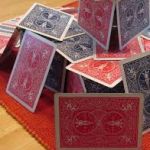Smithsonian Museum of Natural History
Activity OverviewAt the Museum of Natural History, popular kid destinations include the Orkin Insect Zoo, Hall of Gems and Minerals, Discovery Room, and Dinosaur-Fossil Hall (which is under renovation until 2019). The largest (stuffed) African bush elephant in the world is located at the rotunda's center. If your kids like spiders and insects, then check out the tarantula feedings at the Insect Zoo. The Discovery Center houses hands-on-activities and a state-of-the art Johnson IMAX Theater. Things to See & DoAfrican Elephant (Rotunda) - The museum's 8-ton, 14-foot-tall African elephant is in a setting that re-creates the Angolan bush. The diorama also introduces important ideas in botany, entomology, mineral sciences, and zoology, as well as information the elephants' importance in African cultures. Orkin Insect Zoo - A special exhibit hall on the 2nd Floor of the Museum where visitors can observe live insects and their many-legged relatives. Volunteers conduct tarantula feeding demonstrations, work with live insects that visitors may touch and hold, and answer questions about the many-legged creatures that live in the Insect Zoo. Live Coral Reef (Ocean Hall) - In addition to seeing fabulous and ferocious fossils, amazing preserved specimens and models, the ocean hall's living model coral reef ecosystem-teeming with life! Live Butterflies & Plants Pavillion - Immerse yourself in the tropical ecosystem of exotic plants and beautiful butterflies. There is a small ticket fee associated with this exhibit. Hope Diamond - In addition to being the must see at the Smithsonian Institution, it is recognized around the world, and is even used by media in our society as the ultimate example of value and perfection. While certainly not the biggest diamond in the world (45 carats), it is one of the most well-known and beautiful. And blue diamonds are most rare. It may be one of the most visited museum pieces in the world. Dom Pedro Aquamarine - In the late 1980s, an exceptionally large aquamarine crystal was found by three Brazilian miners in Pedra Azul, Minas Gerais, Brazil. These Brazilian prospectors, garimperos, accidentally dropped the meter-long aquamarine, breaking it into three pieces. A Brazilian buyer, whose identity is unknown to us, purchased the fragmented pieces. The finest and largest piece was saved and transformed into what is now known as the Dom Pedro Aquamarine. Museum of Natural History Insider Tips
Fun things to do in... Fun Things to Do at Home  Fun games for the whole family Fun games for the whole family Making science into family fun Making science into family fun Giving the little ones a laugh Giving the little ones a laugh Fun, creative activities Fun, creative activities Exercise for the mind Exercise for the mind Entertainment for the whole family Entertainment for the whole family Great fun when you're stuck at home Great fun when you're stuck at home |
||||||||||

